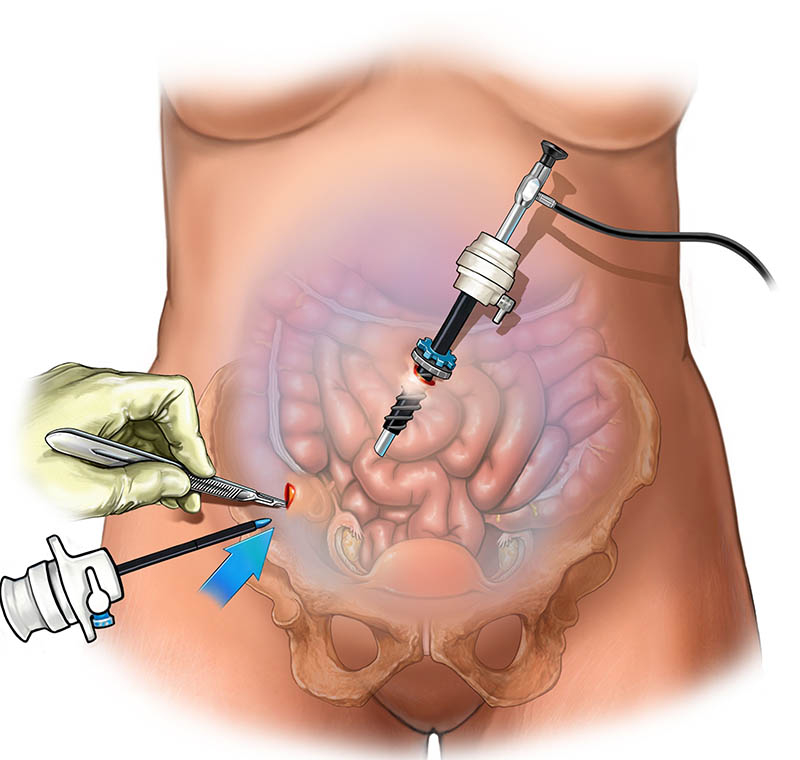Laparoscopy, key hole surgery or minimal invasive surgery (MIS) means carrying out surgery in body spaces while watching it with a camera. Main feature of laparoscopy is ability to carry out surgeries without a large cut. This means less pain, quick recovery, less bleeding and good cosmetic outcome.
The size of the incisions on the skin can vary from 3mm to 1.5cm to carry out laparoscopy surgeries. These procedures have been made very safe by various developments in technology. Laparoscopy started in 1901 George Kelling from Germany performed first laparoscopy procedure on a dog. First human surgery was carried in Sweden in 1910 by Hans Christian Jacobaeus.
Most of the procedures that were carried out as open operations can be carried out laparoscopically. Commonest among them are removal of gall bladder (Cholecystectomy), appendicectomy, removal of bowel cancer and rectal cancer and fundoplication to prevent acid reflux etc.
Almost all the time the patient is given general anaesthesia. First cut will be made around the umbilicus (bellybutton) and a sleeve(trocar) will be inserted into the body space. A CO2 supply will be connected to this trocar to create space for the surgery and a camera will be inserted to carry out a survey of the space and confirm there are no inadvertent injuries to abdominal organs. Next other ports or trocars will be inserted while watching through the camera to prevent any damage to internal organs. A survey of the abdomen will be carried out as the first step to diagnose and confirm what is wrong with the patient. Depending on the condition to treat, surgery would proceed.
Advantage of laparoscopy is to prevent a big incision to enter into the abdomen. This in turn will reduce the hospital stay, enable to return to work early, reduce pain and will give superior cosmetic results. Most of the time the tiny scars of the abdominal wall may not be visible compared to ugly long abdominal scars. Laparoscopy gives a better view of entire abdominal cavity for the surgeon to make surgery safe and help to diagnose what could have missed otherwise or prevent the need to extend the cut on the abdominal wall.
